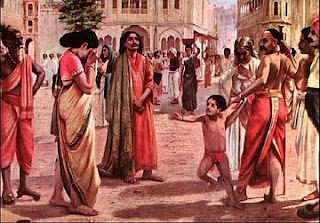HOMEMADE MOVIES
Nepali film
industry has aged more than 40 years since its birth, yet time and again, we
content that the industry is its infancy. The history of cinema in Nepal dates
back to 2008 B.S. when the first Nepali feature film titled Satya
Harishchandra was brought out from Kolkata, India. It was directed by D.B
Parihayar. (There is still some doubt if the film was in Nepal language
or it was dubbed.)
Aama
was of course the first Nepal film produced
in Nepal in 2012 B.S., by the government’s information department. Shiva
Shankar Manandhar (renowned radio singer and music composer) and Bhuwan
Thapa (theatre artist) debuted as lead actors in the movie.
With the objective
of provide healthy entertainment to the Nepali people, the government established
the Royal Nepal Film Corporation (RNFC)
in 2028
B.S. RNFC, it was hoped, would produce films to displace foreign movies
so that Nepali people would in time love their own movies. It was also the
first effort towards establishing Nepali film industry.
With Yadav Kharel as
its chairman and produced "Mann ko Bandh in 2028 B.S.
Directed by Prakash Thapa, it was first screened on Falgun 8, 2030 B.S. and.
In 2034
B.S. Kumari, the first Eastman colour feature film was released under the
direction of Prem Kumar Basnet.
Later on,
government turned over (RNFC) into private hands, rechristening
Nepal
Film Development Company (NFDC) on December 7, 1993. NFDC board was
held in June 29, 2000 and Yadav Kharel was again appointed the
chairman. NFDC would formulate plans and programmes for the development of film
industry.
Despite the long
history, Nepal films are still not up to the mark. The reasons are many. For
such deliberations is the quality of the films, which is not up to mark. For technical
precision, the technical crew must be equipped with sophisticated gadget and sound
technical know-how, both of which are lacking in our country. The small market
which restrains heavy investments and does not allow operation of
modern equipments, nor is there any institute to train technicians.
Considering the limited market, no producer wants to invest in film. That is
why the quality of films is not up to the mark as compare to films produced in
India or other developed movie markets.
(This
article was published in The Kathmandu in November 30, 2009)



Comments
Post a Comment